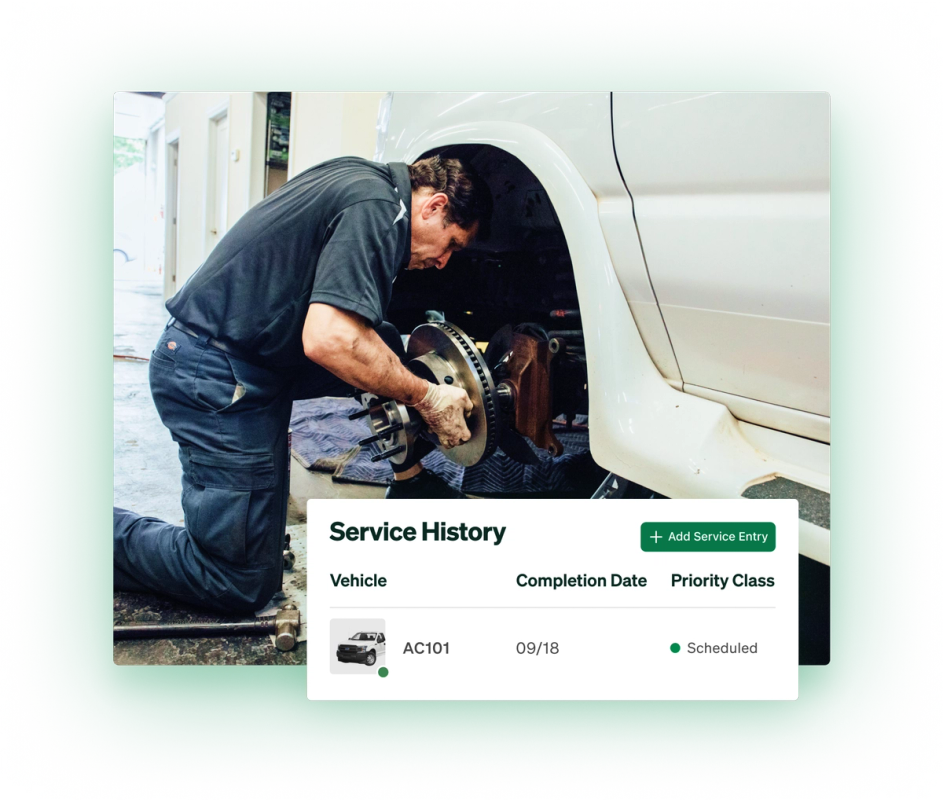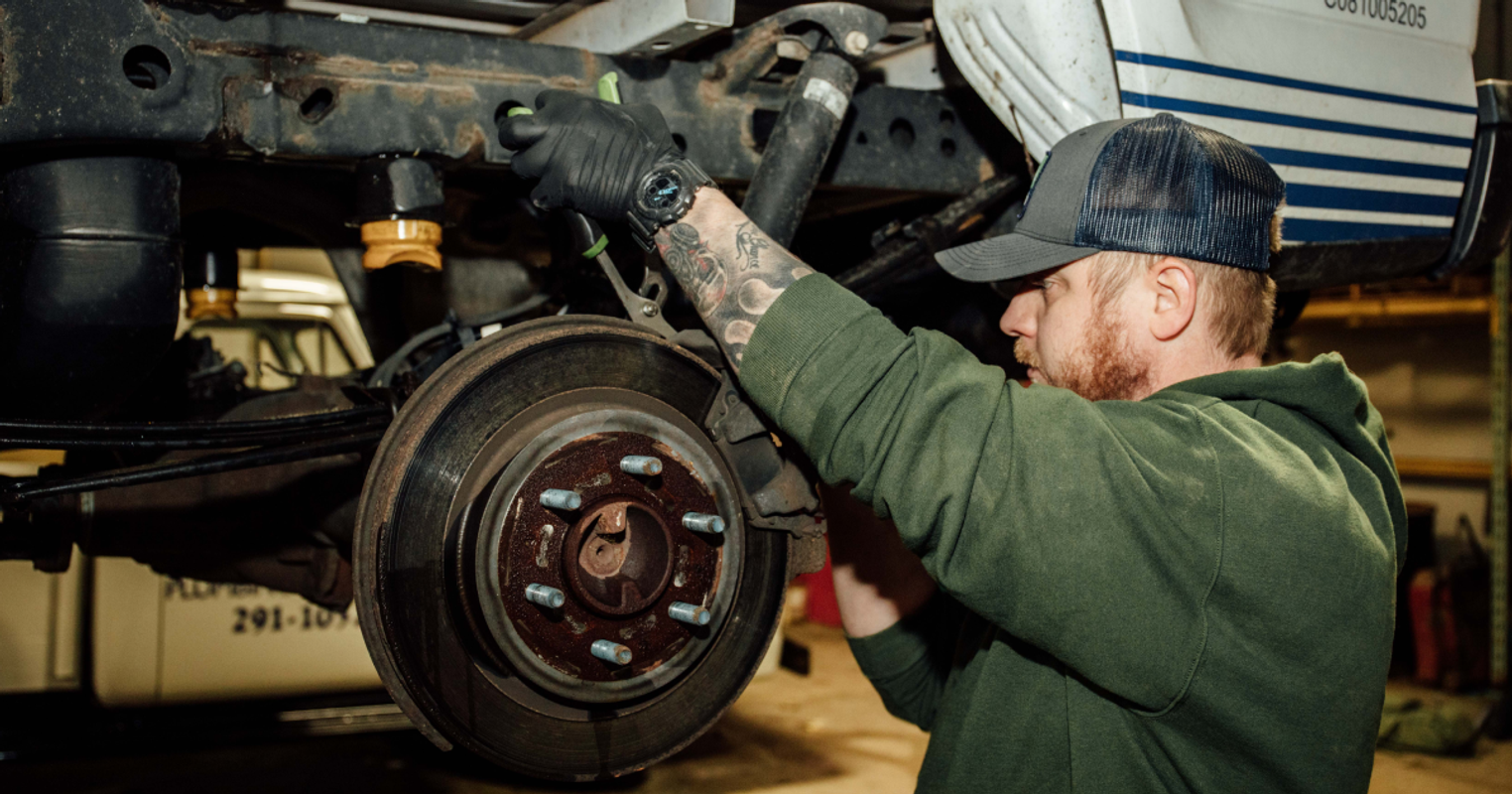Fleet Maintenance Management
Improve uptime and manage entire maintenance lifecycles in one place
Share responsibility across team members and achieve your ideal fleet maintenance workflow. Track and manage every aspect of your fleet’s maintenance from reminders to reporting and ensure nothing slips through the cracks.
automated maintenance alert
Send critical reminders and notifications
to the right people at the right time
Automatically generate preventive maintenance (PM) schedules based on manufacturer recommendations
Improve your vehicle inspection process
Report issues as soon as they appear

Fleets love Fleetio
United Site Services
Kevin Rider
maintenance shop network
Improve efficiency and take back control
of third-party maintenance activities
Keep a detailed service history for every vehicle
Avoid phone calls and prevent surprise bills
Get exclusive discounts from our Maintenance Shop Network

Top fleet maintenance features
Preventive Maintenance Scheduling
Fleet Reports & Dashboards
Digital Work Orders
Driver Assignments
Vehicle Inspections
Maintenance History Tracking
in-house maintenance
Effectively track labor, parts and inventory from
issue creation to resolution
Plan, schedule and perform in-house maintenance
Communicate in real time and minimize downtime
Manage parts and inventory and purchase supplies with ease

fleet maintenance reporting
Stop data overload and surface
the right data to stakeholders in real time
Measure the costs and efficiency of maintenance activities
Gain instant insight into spend
Understand the true cost of owning and operating your vehicles

Frequently Asked Questions
Fleet maintenance management is the systematic process of planning, scheduling, performing, tracking and analyzing maintenance activities across your fleet. It includes preventive maintenance scheduling, issue reporting and resolution, work order management, parts inventory control, vendor management and maintenance cost analysis – all designed to maximize asset uptime while minimizing repair costs.
Preventive maintenance scheduling improves operations by: reducing unexpected breakdowns and costly emergency repairs; extending asset lifespan through consistent care; enhancing safety for drivers and the public; improving fuel efficiency; maintaining asset resale value; ensuring regulatory compliance; and optimizing maintenance resources by grouping services efficiently.
Reactive maintenance addresses issues only after a failure occurs, resulting in unplanned downtime, higher repair costs and potential operational disruptions. Preventive maintenance follows scheduled service intervals based on time, mileage or engine hours to identify and resolve potential issues before they cause breakdowns, ultimately reducing costs and improving reliability.
Measure maintenance effectiveness through key metrics including: total maintenance cost per mile/kilometer; asset downtime percentage; percentage of preventive vs. reactive maintenance; mean time between failures; repair order turnaround time; part replacement frequency; warranty recovery rates; and overall fleet availability. A quality fleet maintenance system provides these metrics through customizable reports.
The decision to outsource or perform maintenance in-house depends on several factors including fleet size, asset types, available facilities, staff expertise, geographic distribution and budget considerations. Many organizations use a hybrid approach, handling routine services in-house while outsourcing specialized repairs. A good fleet maintenance system should support both models effectively.
A maintenance management system helps control inventory by: tracking part usage patterns to determine optimal stock levels; alerting when items need reordering; managing parts by location down to bin level; recording part costs and vendor information; tracking part warranties; reducing emergency purchases through better planning; and providing analytics to identify opportunities for inventory optimization and cost reduction.
Digital inspections improve maintenance by: providing real-time issue identification; creating consistent inspection processes; automatically generating work orders from failed inspection items; creating audit trails for compliance; including photo evidence of defects; reducing paperwork and administrative time; improving communication between drivers and maintenance staff; and accelerating the repair process to minimize asset downtime.
More Fleet Maintenance content
Ready to get started?
Join thousands of fleets running on Fleetio
Questions? Call us at 1-800-975-5304


